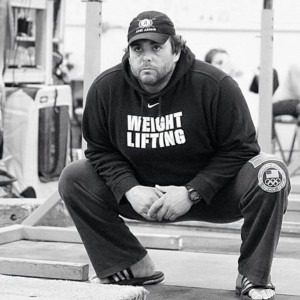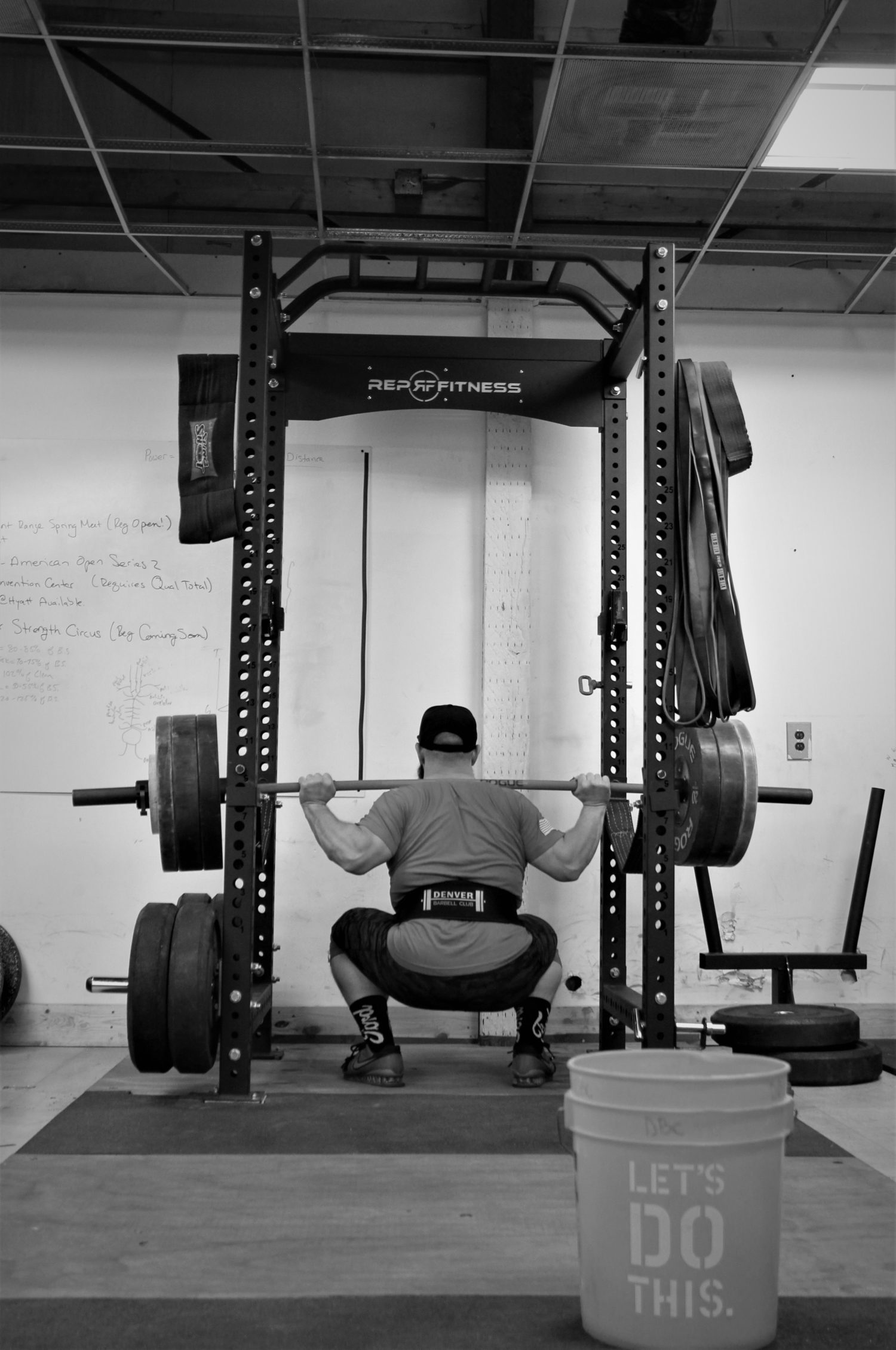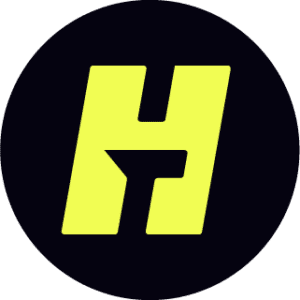Using Supplementary Exercises to Improve the Snatch and Clean and Jerk
When I was competing in Olympic lifting, my coach’s staple training “diet” was snatches and clean and jerks. And then some more.
While I enjoyed my training, I feel like I could’ve been a better athlete if I’d had a bit more variety and had used the supplemental exercises more.
What do I mean by this term?
Really any exercise that isn’t one of the big two, but contributes to them in some way. This can be in a direct or indirect way. As the term implies, supplemental movements are meant to be just that: things that enhance an athlete’s ability to perform the clean and jerk.
In this post, we’ll explore how to use them in your programming for maximum benefit.

Written By
Sean Waxman
Sean, owner and head coach of Waxman’s Gym, has 25 years of coaching experience and is a national-level weightlifter with advanced studies in kinesiology and biomechanics. Since 2010, he has developed top athletes, including World Championship and Pan Am medalists, national champions, and record holders. Sean also trains CrossFitters and athletes from various sports. He is a Director on the Board of USA Weightlifting, a Lead Instructor for Coaching Education, and former President of the Southern California USA Weightlifting chapter.
Programs
Website
There are three main ways that a supplemental (aka accessory) exercise can assist with the two Olympic lifts: strengthening, teaching, and/or fixing. The more it has an impact – which can depend on what level the athlete is at or where they’re at in a training cycle – the more often we’ll use it. For example, with beginners, a common supplemental exercise is snatches from above the knee using blocks. It decreases the distance they have to move the bar and allows them to focus on a smaller range of motion. This is an example of how we teach every exercise – we break it into small digestible chunks and then string them back together.
The same exercise can be used in different ways. The snatch from blocks above the knee is also useful for more advanced lifters when we want to emphasize explosiveness. The shorter bar path reduces fatigue in the knees and lower back while allowing them to generate a strong pop off the blocks. So we can do some heavy squatting (another supplemental lift we’ll look at in more depth in a moment) and still have them get some snatches done in the same session. This is just one example of using an exercise that has a strong correlation with the snatch for a couple of different purposes. We might also use the chunking method – in this case, breaking down the clean and jerk or snatch into smaller parts – to fix technique errors.
Supplemental Lifts For Strength
There are also supplemental lifts that fall into the category of strengtheners. These include deadlifts, pulls, extensions, and, of course, front and back squats. The latter doesn’t really resemble the snatch or clean and jerk that closely, but it does give us a good idea of an athlete’s strength potential. This means there is more of a relationship between it and the clean and jerk than might be apparent at first glance. Once an athlete reaches a certain ratio between the two movements, increasing their back squat max will not carry over into their ability to perform a heavier clean and jerk.
So if they’ve reached this number – which I’ll list in the section below – then we can safely assume that any errors or issues they’re having lie in their technique or elsewhere – it’s not a strength deficiency. This is one example of using a strength-focused supplemental lift not only for the physical benefits it offers, but also as a valuable data point that helps us address a limitation.

Playing The Percentages Game
Any supplemental exercise that closely relates to the two Olympic lifts can be utilized as both a predictive and prescriptive tool. What I mean by this is that they can predict how well an athlete is likely to do on the platform, and can also be prescribed as part of how we direct or re-direct an athlete’s training based on certain deficiencies.
To see how this works, let’s return to the exercise I mentioned earlier: the snatch on blocks from above the knee. The magic number here is 95 percent. If they can snatch this percentage of their regular snatch PR from this modified position, then I’ll say it’s “in balance” with the full snatch. At the beginning of a training cycle, I work with each athlete to identify goals for their two Olympic lifts. Then I’ll use these numerical targets for the end of the cycle and apply them to the supplemental lifts using certain percentages – they’re intertwined.
Here’s a list of percentages that apply to a broad range of supplemental lifts:
Supplemental Lifts Related to the Snatch
- Hang snatch from below the knee – 95 percent
- Overhead squat – 105 percent
- Power snatch – 95 percent
Supplemental Lifts Related to the Clean and Jerk
- Clean – 102 percent (+/- 2 percent)
- Clean from blocks above the knee – 95 percent
- Hang clean from below the knee – 95 percent
- Jerk or jerk from front squat – 105 percent
- Behind the neck jerk – 100 percent
- Push jerk – 90 percent
- Front squat – 135 percent
- Seated press – 55 percent
- Power clean – 80 percent
For overall balance, I like every lifter’s snatch to clean and jerk ratio to be around 80 percent. This might go up or down by around two percent based on their weight class.
The Art of Programming Supplemental Exercises
Exactly how I program supplemental lifts depends on the level of the athlete, what they’re aiming for, and where they are in the training year. The latter doesn’t refer to a calendar year necessarily. Rather, we look at the main upcoming event, such as nationals, and then work backwards from this. That said, I generally push strength first. This means including more supplemental strengtheners in the first half of the training year than in the second. Why? Because it will provide the athlete with a large reservoir of strength that they can draw from. Once they’ve become stronger, we’ll try to maintain this level until their competition arrives. I want to ensure they’re not operating too close to their redline in this second half of the training year – particularly given how demanding the clean and jerk is – and the way to do this is to get them stronger. Once they move on to focusing more on the two Olympic lifts, they will be working with a bigger engine.
It’s my preference to use small, highly concentrated blocks of training that are no more than four weeks in duration. Each of these focuses on a specific motor quality, and up to two strength qualities. This then determines exercise selection and combination. So if we’re trying to improve speed, then I’ll have them do a lot of lifts from the hang position. Whereas if enhancing acceleration is the goal, they’ll be doing plenty of work from blocks. Our strength work supports these emphases, and we always program with the ultimate goal in mind.
Quality, Quality, Quality
In real estate, the old cliché is that only three things matter when buying a house: location, location, location. In weightlifting, factors like strength are obviously important, but I’d say the main thing I’m looking for is quality, quality, quality. If we return again to the snatch from blocks above the knee, this portion of the lift should look identical to how it would appear in the full snatch. And the second rep should have the same tempo, technique, and rhythm as the one before and after it. In such an analysis, you need to consider what the motor quality is that you’re trying to improve, and how it relates to one of the two Olympic lifts. Then you must protect that quality in every set and rep.
Let’s apply this to the squat. Yes, positioning is crucial, but what I’m really looking at is the speed of the rise out of the bottom. This is the component of the lift that most directly relates to their clean and jerk, and shows me how likely or unlikely the athlete is to make their C+J attempts. If you have an accelerometer at your disposal, you can use this to objectively measure speed and power. If not, then you’ll have to rely on your coaching eye to watch every rep, assess the delta, and tell the athlete when to stop if their quality level declines beyond an acceptable point. This is largely up to you. What standards are you looking for them to uphold in a lift? Are they catching their power clean high enough, or just racing to the bottom position? Are they quick and crisp in the hang clean, or getting sluggish? While more advanced athletes might be able to sense such things, this ability diminishes with fatigue and it’s still on you to make such determinations.
If the quality level declines, the best way to deal with the issue and safeguard a particular motor quality is to adjust the intensity (typically the weight on the bar). I know some coaches like to increase the rest periods between sets, but I’m not a big fan of this approach because when you reduce density too much, you start to see fitness levels declining. The same goes for volume, which is the last thing I’ll tinker with if someone’s quality is below an acceptable standard in any supplemental lift (or the snatch and clean and jerk, for that matter). If you cut the volume too far, it becomes very difficult to replicate the frequency an athlete will face in competition because their training won’t be creating a realistic situation. So we tend to tweak intensity instead.

Mo’ Supplemental Lifts, ‘Mo Better
As I mentioned in the introduction, when I was lifting competitively, my coach really emphasized the snatch and clean and jerk and we’d just do a few pulls, Romanian deadlifts, and squats. This meant I was doing 500, 600, or even 700 reps of the big two every week. I got away with this high volume for a while, but it’s not the best way to develop an athlete over the long-term unless they’re very durable. Or, in the case of certain countries, if they’re using performance-enhancing drugs (more on the relationship between volume and PEDs to come in a future piece).
All these years later, the biggest mistake I still see with the supplemental lifts is not doing them enough. It’s still sexy to mainly do the clean and jerk and snatch all the time. Yet utilizing these complementary exercises allows us to change up the stressors that we’re placing on our athletes so they don’t get so beaten up and eventually break down. That said, you can’t just program these other exercises haphazardly. That’s why I use short training blocks and have a unidirectional focus for every day.
That way, I can be mindful about the training goal and the stress the athlete will be undergoing, and then how we’re varying this in a given week during a certain block. All the exercises we employ and the way we combine them have a specific purpose with the desired outcome for the session, the cycle, and the training year always top of mind. Such a careful approach allows each athlete to train frequently and continue progressing without falling apart.
Find Your Perfect Training Plan
Sometimes all you need to reach your destination on your fitness journey is an expert guide. Look no further, we've got you covered. Browse from thousands of programs for any goal and every type of athlete.
Try any programming subscription FREE for 7 days!
Related Articles
You May Also Like...
The Ultimate Guide to Lunges: Queen of all Glute Exercises
Your glutes are the largest muscle group in your body. They’re responsible for almost everything your legs do—walking, running, jumping, squatting, lunging, and just standing upright. As far as moving through space goes, strong glutes are the bedrock of overall...
A Beginner’s Guide to Steel Mace Training
Think you’ve mastered kettlebells? Meet the steel mace — the brutal, offset weapon that forces your body into three-dimensional stability, grip work, and rotational strength. Ancient tool. Modern performance.Written Byjesse grund Jesse Grund’s passion is simple: coach...
The Best Bench Press Warm Up Strategy
We get it. You’re pressed for time in the gym. But skipping the warm up is the surest way to underperform and risk injury. This 3D approach to your bench press warm up not only allows you to lift more weight, but also ensures the long-term health of your shoulder...
The Ultimate Guide to Lunges: Queen of all Glute Exercises
Your glutes are the largest muscle group in your body. They’re responsible for almost everything your legs do—walking, running, jumping, squatting, lunging, and just standing upright. As far as moving through space goes, strong glutes are the bedrock of overall...
A Beginner’s Guide to Steel Mace Training
Author: Jesse Grund
Mace training will make you a better mover without it’s not confining you to a fixed space or predetermined range of motion. Second, it’s an offset load with 80 to 90 percent of the weight in the head. You’re also constantly having to resist rotation, which creates greater core engagement.

Want more training content?
Subscribe
For Coaches
For Athletes
About
Support
Training Lab
Access the latest articles, reviews, and case studies from the top strength and conditioning minds in the TH Training Lab!
Made with love, sweat, protein isolate and hard work in Denver, CO
© 2024 TrainHeroic, Inc. All rights reserved.





